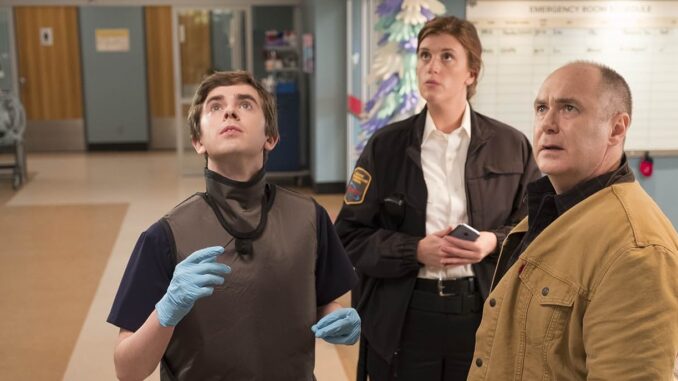
There is a certain glow in the operating room — not just the cold brilliance of surgical lamps, but a kind of light that comes from the people working beneath them. In The Good Doctor, that glow begins at the table, under the steady hands of Dr. Shaun Murphy, and somehow reaches far beyond the hospital walls, into the living rooms, and hearts, of millions. This is the rare kind of show that doesn’t simply entertain; it resonates, lingers, and becomes part of the cultural conversation.
On the surface, The Good Doctor is another medical drama. The setting is familiar: gleaming operating theaters, urgent codes called over the PA system, the constant flow of patients in distress. But the difference lies in the lens. The series invites us to see this world through Shaun’s eyes — eyes that notice details others overlook, that approach problems with a clarity both startling and beautiful. From the very first episode, we are drawn into his perspective, and in doing so, we are forced to question our own.
Part of what makes the show a phenomenon is how it merges the personal and the professional so seamlessly. Each episode delivers the high-stakes tension of surgery — the flash of steel instruments, the hurried exchange of medical terms, the split-second decisions — but it never forgets the beating hearts on either side of the scalpel. The triumphs feel intimate; the losses, personal. We care not just because a life hangs in the balance, but because we’ve been made to understand whose life it is, and why it matters.
Shaun’s character is central to this impact. Portrayed with nuance and depth, he is both a brilliant surgeon and a man navigating the complexities of autism. His differences are not portrayed as quirks to be overcome, but as integral parts of who he is — strengths and challenges intertwined. Watching Shaun succeed, falter, learn, and adapt becomes a journey of empathy for the audience. We begin to see the value of perspectives unlike our own, not in theory, but in practice.

The ensemble cast amplifies this effect. Dr. Glassman’s quiet mentorship, Claire’s instinctive kindness, Dr. Lim’s balance of authority and compassion — each relationship with Shaun offers a different lens on acceptance, trust, and growth. Conflicts arise, sometimes sharply, but they are not left to fester. Instead, they evolve into moments of understanding, making the resolution feel earned rather than scripted.
Cinematically, the series uses visual storytelling to bridge the gap between the clinical and the emotional. The bright whites and blues of the operating room are contrasted with the softer ambers of late-night conversations, the deep shadows of moments of doubt. Shaun’s thought process is often visualized for us — anatomical diagrams overlaid on reality, slow-motion focus on a crucial movement — making his mental brilliance tangible, and his victories all the more satisfying.
Another reason The Good Doctor has transcended the boundaries of television is its willingness to tackle difficult subjects. From ethical dilemmas in treatment to biases within the medical system, the show doesn’t shy away from discomfort. It asks questions that have no easy answers: What is the value of one life over another when resources are limited? How do we balance a patient’s autonomy with a doctor’s expertise? In confronting these questions, the series engages its audience not just as viewers, but as participants in a larger dialogue.
And then there is the emotional core — the moments that stay with us long after the credits roll. A patient waking to see their loved one’s relieved smile. A colleague placing a reassuring hand on Shaun’s shoulder after a hard day. Shaun himself, standing alone in a hallway, processing a victory or a loss in his own quiet way. These are not grand gestures; they are small, human moments that, collectively, build a bridge between fiction and reality.
In an age of endless content, where shows are binged and forgotten in the space of a weekend, The Good Doctor has managed to remain in the public consciousness season after season. It does this not by chasing spectacle, but by returning to the fundamentals: strong storytelling, characters we care about, and an unshakable commitment to showing the humanity at the heart of medicine.
